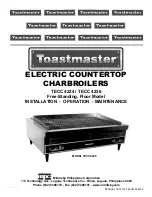
16
0
0,4
0,2
0,6
0,8
1
1,4
1,2
1,6
1,8
2
2,4
2,2
2,6
2,8
3
3,4
3,2
3,6
3,8
4
4,4
4,2
4,6
4,8
5
5,4
5,2
5,6
5,8
6
0
2000
4000
6000
8000
10000
12000
14000
16000
20000
22000
24000
26000
18000
Portata (l/h )
Pe
rd
ite
d
ic
ar
ic
o
(m
/H
)
2
O
350
300
250
200
150
Technical characteristics and dimensions
The pump is not an integral part of the boiler. It is advisable to choose a
pump with a flow rate and head of approximately 2/3 of its typical curve.
ARES TEC 200 ErP
Maximum flow rate in l/h (Δt = 15 K)
11.192
Nominal requested flow rate in l/h (Δt = 20 K)
8.394
ARES TEC 350 ErP
Maximum flow rate in l/h (Δt = 15 K)
19.712
Nominal requested flow rate in l/h (Δt = 20 K)
14.784
ARES TEC 150 ErP
Maximum flow rate in l/h (Δt = 15 K)
8.376
Nominal requested flow rate in l/h (Δt = 20 K)
6.282
ARES TEC 300 ErP
Maximum flow rate in l/h (Δt = 15 K)
16.856
Nominal requested flow rate in l/h (Δt = 20 K)
12.642
ARES TEC 250 ErP
Maximum flow rate in l/h (Δt = 15 K)
14.018
Nominal requested flow rate in l/h (Δt = 20 K)
10.514
The boiler pump must have head that can ensure circulator flow rates
according to the circuit’s ∆t.
The pumps must be determined by the installer or
designer based on the data for the boiler and system.
2.4.2 DETERMINING THE PRIMARY CIRCUIT PUMP OR BOILER PUMP
NOTE:
It is always advisable to set up a hydraulic compensator
between the boiler circuit and the system circuit. It
becomes ESSENTIAL if the system requires greater
flow rates than the maximum allowed by the boiler,
i.e. ∆t below 15K.
EXAMPLE:
For a ΔT 20K, of an ARES 250 Tec the maximum
required flow rate is 10514 l/h.
From the head loss graph it is possible to deduce that
the pump must ensure a head of at least 1.6 m/H
2
O.
Flow rate (l/h)
H
ead los
s (m/H2O)
















































